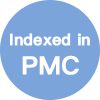REFERENCES
1. Charbonneau MR, O’Donnell D, Blanton LV, et al. Sialylated milk oligosaccharides promote microbiota-dependent growth in models of infant undernutrition. Cell 2016;164:859-71.
2. Riva A, Borgo F, Lassandro C, et al. Pediatric obesity is associated with an altered gut microbiota and discordant shifts in Firmicutes populations. Environ Microbiol 2017;19:95-105.
3. Kim YG, Sakamoto K, Seo SU, et al. Neonatal acquisition of Clostridia species protects against colonization by bacterial pathogens. Science 2017;356:315-9.
4. Henrick BM, Rodriguez L, Lakshmikanth T, et al. Bifidobacteria-mediated immune system imprinting early in life. Cell 2021;184:3884-98.e11.
5. Yao Y, Cai X, Ye Y, Wang F, Chen F, Zheng C. The role of microbiota in infant health: from early life to adulthood. Front Immunol 2021;12:708472.
6. Yassour M, Vatanen T, Siljander H, et al; DIABIMMUNE Study Group. Natural history of the infant gut microbiome and impact of antibiotic treatment on bacterial strain diversity and stability. Sci Transl Med 2016;8:343ra81.
7. Mitchell CM, Mazzoni C, Hogstrom L, et al. Delivery mode affects stability of early infant gut microbiota. Cell Rep Med 2020;1:100156.
8. Yang R, Wang Y, Ying Z, et al. Inspecting mother-to-infant microbiota transmission: disturbance of strain inheritance by cesarian section. Front Microbiol 2024;15:1292377.
9. Lou YC, Olm MR, Diamond S, et al. Infant gut strain persistence is associated with maternal origin, phylogeny, and traits including surface adhesion and iron acquisition. Cell Rep Med 2021;2:100393.
10. Bogaert D, van Beveren GJ, de Koff EM, et al. Mother-to-infant microbiota transmission and infant microbiota development across multiple body sites. Cell Host Microbe 2023;31:447-60.e6.
11. Ferretti P, Pasolli E, Tett A, et al. Mother-to-infant microbial transmission from different body sites shapes the developing infant gut microbiome. Cell Host Microbe 2018;24:133-45.e5.
12. Yassour M, Jason E, Hogstrom LJ, et al. Strain-level analysis of mother-to-child bacterial transmission during the first few months of life. Cell Host Microbe 2018;24:146-54.e4.
13. Chen DW, Garud NR. Rapid evolution and strain turnover in the infant gut microbiome. Genome Res 2022;32:1124-36.
14. Scholtens PA, Oozeer R, Martin R, Amor KB, Knol J. The early settlers: intestinal microbiology in early life. Annu Rev Food Sci Technol 2012;3:425-47.
15. Mäklin T, Thorpe HA, Pöntinen AK, et al. Strong pathogen competition in neonatal gut colonisation. Nat Commun 2022;13:7417.
16. Ormaasen I, Rudi K, Diep DB, Snipen L. Metagenome-mining indicates an association between bacteriocin presence and strain diversity in the infant gut. BMC Genomics 2023;24:295.
17. Gregory AC, Zablocki O, Zayed AA, Howell A, Bolduc B, Sullivan MB. The gut virome database reveals age-dependent patterns of virome diversity in the human gut. Cell Host Microbe 2020;28:724-40.e8.
18. Yu MK, Fogarty EC, Eren AM. Diverse plasmid systems and their ecology across human gut metagenomes revealed by PlasX and MobMess. Nat Microbiol 2024;9:830-47.
19. Vatanen T, Jabbar KS, Ruohtula T, et al. Mobile genetic elements from the maternal microbiome shape infant gut microbial assembly and metabolism. Cell 2022;185:4921-36.e15.
20. Shah SA, Deng L, Thorsen J, et al. Expanding known viral diversity in the healthy infant gut. Nat Microbiol 2023;8:986-98.
21. He W, Russel J, Klincke F, Nesme J, Sørensen SJ. Insights into the ecology of the infant gut plasmidome. Nat Commun 2024;15:6924.
22. Hall JPJ, Harrison E, Baltrus DA. Introduction: the secret lives of microbial mobile genetic elements. Philos Trans R Soc Lond B Biol Sci 2022;377:20200460.
23. Bittinger K, Zhao C, Li Y, et al. Bacterial colonization reprograms the neonatal gut metabolome. Nat Microbiol 2020;5:838-47.
24. Vatanen T, Ang QY, Siegwald L, et al. A distinct clade of Bifidobacterium longum in the gut of Bangladeshi children thrives during weaning. Cell 2022;185:4280-97.e12.
25. Liang G, Zhao C, Zhang H, et al. The stepwise assembly of the neonatal virome is modulated by breastfeeding. Nature 2020;581:470-4.
26. Bethke JH, Ma HR, Tsoi R, Cheng L, Xiao M, You L. Vertical and horizontal gene transfer tradeoffs direct plasmid fitness. Mol Syst Biol 2023;19:e11300.
27. Ewald PW. Transmission modes and evolution of the parasitism-mutualism continuum. Ann N Y Acad Sci 1987;503:295-306.
28. Turner PE, Cooper VS, Lenski RE. Tradeoff between horizontal and vertical modes of transmission in bacterial plasmids. Evolution 1998;52:315-29.
29. Rankin DJ, Rocha EP, Brown SP. What traits are carried on mobile genetic elements, and why? Heredity 2011;106:1-10.
30. Niu J, Xu L, Qian Y, et al. Evolution of the gut microbiome in early childhood: a cross-sectional study of Chinese children. Front Microbiol 2020;11:439.
31. Mäntynen S, Laanto E, Oksanen HM, Poranen MM, Díaz-Muñoz SL. Black box of phage-bacterium interactions: exploring alternative phage infection strategies. Open Biol 2021;11:210188.
32. Davray D, Deo D, Kulkarni R. Plasmids encode niche-specific traits in Lactobacillaceae. Microb Genom 2021;7:mgen000472.
33. LeGault KN, Hays SG, Angermeyer A, et al. Temporal shifts in antibiotic resistance elements govern phage-pathogen conflicts. Science 2021;373:eabg2166.
34. Dragoš A, Andersen AJC, Lozano-Andrade CN, Kempen PJ, Kovács ÁT, Strube ML. Phages carry interbacterial weapons encoded by biosynthetic gene clusters. Curr Biol 2021;31:3479-89.e5.
35. Dineen RL, Bottacini F, O’Connell-Motherway M, van Sinderen D. Transcriptional landscape of the pMP7017 megaplasmid and its impact on the Bifidobacterium breve UCC2003 transcriptome. Microb Biotechnol 2024;17:e14405.
36. Martínez Arbas S, Narayanasamy S, Herold M, et al. Roles of bacteriophages, plasmids and CRISPR immunity in microbial community dynamics revealed using time-series integrated meta-omics. Nat Microbiol 2021;6:123-35.
38. Tisza M, Lloyd R, Hoffman K, et al; TEDDY Study Group. Phage-bacteria dynamics during the first years of life revealed by trans-kingdom marker gene analysis. bioRxiv 2023.
39. Lou YC, Chen L, Borges AL, et al. Infant gut DNA bacteriophage strain persistence during the first 3 years of life. Cell Host Microbe 2024;32:35-47.e6.
40. Maqsood R, Rodgers R, Rodriguez C, et al. Discordant transmission of bacteria and viruses from mothers to babies at birth. Microbiome 2019;7:156.
41. Garmaeva S, Sinha T, Gulyaeva A, et al; Lifelines NEXT cohort study. Transmission and dynamics of mother-infant gut viruses during pregnancy and early life. Nat Commun 2024;15:1945.
42. Mathieu A, Dion M, Deng L, et al. Virulent coliphages in 1-year-old children fecal samples are fewer, but more infectious than temperate coliphages. Nat Commun 2020;11:378.
43. Redgwell TA, Thorsen J, Petit MA, et al. Prophages in the infant gut are largely induced, and may be functionally relevant to their hosts. Available from: https://www.biorxiv.org/content/10.1101/2021.06.25.449885v1. [Last accessed on 8 Nov 2024].
44. Beller L, Deboutte W, Vieira-Silva S, et al. The virota and its transkingdom interactions in the healthy infant gut. Proc Natl Acad Sci U S A 2022;119:e2114619119.
45. Zeng S, Almeida A, Li S, et al. A metagenomic catalog of the early-life human gut virome. Nat Commun 2024;15:1864.
46. Humphrey S, Fillol-Salom A, Quiles-Puchalt N, et al. Bacterial chromosomal mobility via lateral transduction exceeds that of classical mobile genetic elements. Nat Commun 2021;12:6509.
47. Ravi A, Valdés-Varela L, Gueimonde M, Rudi K. Transmission and persistence of IncF conjugative plasmids in the gut microbiota of full-term infants. FEMS Microbiol Ecol 2018;94:fix158.
48. Pärnänen K, Karkman A, Hultman J, et al. Maternal gut and breast milk microbiota affect infant gut antibiotic resistome and mobile genetic elements. Nat Commun 2018;9:3891.
49. Fogarty EC, Schechter MS, Lolans K, et al. A cryptic plasmid is among the most numerous genetic elements in the human gut. Cell 2024;187:1206-22.e16.
50. Beaber JW, Hochhut B, Waldor MK. SOS response promotes horizontal dissemination of antibiotic resistance genes. Nature 2004;427:72-4.
51. Chen X, Yin H, Li G, et al. Antibiotic-resistance gene transfer in antibiotic-resistance bacteria under different light irradiation: implications from oxidative stress and gene expression. Water Res 2019;149:282-91.
52. Yu Z, Wang Y, Lu J, Bond PL, Guo J. Nonnutritive sweeteners can promote the dissemination of antibiotic resistance through conjugative gene transfer. ISME J 2021;15:2117-30.
53. Yu Z, Henderson IR, Guo J. Non-caloric artificial sweeteners modulate conjugative transfer of multi-drug resistance plasmid in the gut microbiota. Gut Microbes 2023;15:2157698.
54. Hu J, Ye H, Wang S, Wang J, Han D. Prophage activation in the intestine: insights into functions and possible applications. Front Microbiol 2021;12:785634.
55. Pfeifer E, Moura de Sousa JA, Touchon M, Rocha EPC. Bacteria have numerous distinctive groups of phage-plasmids with conserved phage and variable plasmid gene repertoires. Nucleic Acids Res 2021;49:2655-73.
56. Pfeifer E, Bonnin RA, Rocha EPC. Phage-plasmids spread antibiotic resistance genes through infection and lysogenic conversion. mBio 2022;13:e0185122.
57. Pfeifer E, Rocha EPC. Phage-plasmids promote recombination and emergence of phages and plasmids. Nat Commun 2024;15:1545.
58. Piligrimova EG, Kazantseva OA, Kazantsev AN, et al. Putative plasmid prophages of Bacillus cereus sensu lato may hold the key to undiscovered phage diversity. Sci Rep 2021;11:7611.
59. Łobocka MB, Rose DJ, Plunkett G 3rd, et al. Genome of bacteriophage P1. J Bacteriol 2004;186:7032-68.
60. Carattoli A. Resistance plasmid families in Enterobacteriaceae. Antimicrob Agents Chemother 2009;53:2227-38.
61. Venturini C, Zingali T, Wyrsch ER, et al. Diversity of P1 phage-like elements in multidrug resistant Escherichia coli. Sci Rep 2019;9:18861.
63. Schmidtke DT, Hickey AS, Liachko I, Sherlock G, Bhatt AS. Analysis and culturing of the prototypic crAssphage reveals a phage-plasmid lifestyle. Available from: https://www.biorxiv.org/content/10.1101/2024.03.20.585998v2. [Last accessed on 8 Nov 2024].
64. Siranosian BA, Tamburini FB, Sherlock G, Bhatt AS. Acquisition, transmission and strain diversity of human gut-colonizing crAss-like phages. Nat Commun 2020;11:280.
65. Porse A, Schønning K, Munck C, Sommer MO. Survival and evolution of a large multidrug resistance plasmid in new clinical bacterial hosts. Mol Biol Evol 2016;33:2860-73.
66. Shapiro JW, Williams ES, Turner PE. Evolution of parasitism and mutualism between filamentous phage M13 and Escherichia coli. PeerJ 2016;4:e2060.
67. Shapiro JW, Turner PE. The impact of transmission mode on the evolution of benefits provided by microbial symbionts. Ecol Evol 2014;4:3350-61.
68. Carroll AC, Wong A. Plasmid persistence: costs, benefits, and the plasmid paradox. Can J Microbiol 2018;64:293-304.
69. Moraïs S, Mazor M, Tovar-Herrera O, et al. Plasmid-encoded toxin defence mediates mutualistic microbial interactions. Nat Microbiol 2024;9:108-19.
70. Breitbart M, Thompson L, Suttle C, Sullivan M. Exploring the vast diversity of marine viruses. Oceanog 2007;20:135-9.
71. Dikareva E, Matharu D, Lahtinen E, et al. An extended catalog of integrated prophages in the infant and adult fecal microbiome shows high prevalence of lysogeny. Front Microbiol 2023;14:1254535.
72. Reyes A, Haynes M, Hanson N, et al. Viruses in the faecal microbiota of monozygotic twins and their mothers. Nature 2010;466:334-8.
73. Monaghan TM, Sloan TJ, Stockdale SR, et al. Metagenomics reveals impact of geography and acute diarrheal disease on the Central Indian human gut microbiome. Gut Microbes 2020;12:1752605.
74. Shaffer M, Borton MA, McGivern BB, et al. DRAM for distilling microbial metabolism to automate the curation of microbiome function. Nucleic Acids Res 2020;48:8883-900.
75. Hurwitz BL, U’Ren JM. Viral metabolic reprogramming in marine ecosystems. Curr Opin Microbiol 2016;31:161-8.
76. Desmond C, Ross RP, Fitzgerald G, Stanton C. Sequence analysis of the plasmid genome of the probiotic strain Lactobacillus paracasei NFBC338 which includes the plasmids pCD01 and pCD02. Plasmid 2005;54:160-75.
77. Coyne MJ, Zitomersky NL, McGuire AM, Earl AM, Comstock LE. Evidence of extensive DNA transfer between bacteroidales species within the human gut. mBio 2014;5:e01305-14.
79. Kommineni S, Bretl DJ, Lam V, et al. Bacteriocin production augments niche competition by enterococci in the mammalian gastrointestinal tract. Nature 2015;526:719-22.
80. Chassaing B, Cascales E. Antibacterial weapons: targeted destruction in the microbiota. Trends Microbiol 2018;26:329-38.
81. Hols P, Ledesma-García L, Gabant P, Mignolet J. Mobilization of microbiota commensals and their bacteriocins for therapeutics. Trends Microbiol 2019;27:690-702.
82. Peñil-Celis A, Garcillán-Barcia MP. Crosstalk between type VI secretion system and mobile genetic elements. Front Mol Biosci 2019;6:126.
83. García-Bayona L, Coyne MJ, Comstock LE. Mobile type VI secretion system loci of the gut Bacteroidales display extensive intra-ecosystem transfer, multi-species spread and geographical clustering. PLoS Genet 2021;17:e1009541.
84. Takala TM, Mokhtari S, Ahonen SL, Wan X, Saris PEJ. Wild-type Lactococcus lactis producing bacteriocin-like prophage lysins. Front Microbiol 2023;14:1219723.
85. Verster AJ, Ross BD, Radey MC, et al. The landscape of type VI secretion across human gut microbiomes reveals its role in community composition. Cell Host Microbe 2017;22:411-9.e4.
86. Burns N, James CE, Harrison E. Polylysogeny magnifies competitiveness of a bacterial pathogen in vivo. Evol Appl 2015;8:346-51.
87. Li X, Brejnrod A, Thorsen J, et al. Differential responses of the gut microbiome and resistome to antibiotic exposures in infants and adults. Nat Commun 2023;14:8526.
88. Takeuchi N, Hamada-Zhu S, Suzuki H. Prophages and plasmids can display opposite trends in the types of accessory genes they carry. Proc Biol Sci 2023;290:20231088.
89. Mirzaei MK, Maurice CF. Ménage à trois in the human gut: interactions between host, bacteria and phages. Nat Rev Microbiol 2017;15:397-408.
90. Brown TL, Charity OJ, Adriaenssens EM. Ecological and functional roles of bacteriophages in contrasting environments: marine, terrestrial and human gut. Curr Opin Microbiol 2022;70:102229.
91. Melderen L, Saavedra De Bast M. Bacterial toxin-antitoxin systems: more than selfish entities? PLoS Genet 2009;5:e1000437.
92. Bondy-Denomy J, Qian J, Westra ER, et al. Prophages mediate defense against phage infection through diverse mechanisms. ISME J 2016;10:2854-66.
93. Doron S, Melamed S, Ofir G, et al. Systematic discovery of antiphage defense systems in the microbial pangenome. Science 2018;359:eaar4120.
94. Hussain FA, Dubert J, Elsherbini J, et al. Rapid evolutionary turnover of mobile genetic elements drives bacterial resistance to phages. Science 2021;374:488-92.
95. LeRoux M, Srikant S, Teodoro GIC, et al. The DarTG toxin-antitoxin system provides phage defence by ADP-ribosylating viral DNA. Nat Microbiol 2022;7:1028-40.
96. Hochhauser D, Millman A, Sorek R. The defense island repertoire of the Escherichia coli pan-genome. PLoS Genet 2023;19:e1010694.
97. Shaw LP, Rocha EPC, MacLean RC. Restriction-modification systems have shaped the evolution and distribution of plasmids across bacteria. Nucleic Acids Res 2023;51:6806-18.
98. Oliveira PH, Touchon M, Rocha EP. The interplay of restriction-modification systems with mobile genetic elements and their prokaryotic hosts. Nucleic Acids Res 2014;42:10618-31.
99. Picton DM, Luyten YA, Morgan RD, et al. The phage defence island of a multidrug resistant plasmid uses both BREX and type IV restriction for complementary protection from viruses. Nucleic Acids Res 2021;49:11257-73.
100. Bleriot I, Blasco L, Pacios O, et al. The role of PemIK (PemK/PemI) type II TA system from Klebsiella pneumoniae clinical strains in lytic phage infection. Sci Rep 2022;12:4488.
101. Pinilla-Redondo R, Russel J, Mayo-Muñoz D, et al. CRISPR-Cas systems are widespread accessory elements across bacterial and archaeal plasmids. Nucleic Acids Res 2022;50:4315-28.
102. Botelho J. Defense systems are pervasive across chromosomally integrated mobile genetic elements and are inversely correlated to virulence and antimicrobial resistance. Nucleic Acids Res 2023;51:4385-97.
104. Hale L, Lazos O, Haines A, Thomas C. An efficient stress-free strategy to displace stable bacterial plasmids. Biotechniques 2010;48:223-8.
105. Kamruzzaman M, Shoma S, Thomas CM, Partridge SR, Iredell JR. Plasmid interference for curing antibiotic resistance plasmids in vivo. PLoS One 2017;12:e0172913.
106. Hedges RW, Jacob AE, Barth PT, Grinter NJ. Compatibility properties of P1 and PhiAMP prophages. Mol Gen Genet 1975;141:263-7.
107. Kliem M, Dreiseikelmann B. The superimmunity gene sim of bacteriophage P1 causes superinfection exclusion. Virology 1989;171:350-5.
108. Martin S, Heavens D, Lan Y, Horsfield S, Clark MD, Leggett RM. Nanopore adaptive sampling: a tool for enrichment of low abundance species in metagenomic samples. Genome Biol 2022;23:11.
109. Camargo AP, Roux S, Schulz F, et al. Identification of mobile genetic elements with geNomad. Nat Biotechnol 2024;42:1303-12.
110. Guo J, Bolduc B, Zayed AA, et al. VirSorter2: a multi-classifier, expert-guided approach to detect diverse DNA and RNA viruses. Microbiome 2021;9:37.
111. Ren J, Ahlgren NA, Lu YY, Fuhrman JA, Sun F. VirFinder: a novel k-mer based tool for identifying viral sequences from assembled metagenomic data. Microbiome 2017;5:69.
112. Kent AG, Vill AC, Shi Q, Satlin MJ, Brito IL. Widespread transfer of mobile antibiotic resistance genes within individual gut microbiomes revealed through bacterial Hi-C. Nat Commun 2020;11:4379.
113. Marbouty M, Thierry A, Millot GA, Koszul R. MetaHiC phage-bacteria infection network reveals active cycling phages of the healthy human gut. Elife 2021;10:e60608.
114. Lawrence D, Campbell DE, Schriefer LA, et al. Single-cell genomics for resolution of conserved bacterial genes and mobile genetic elements of the human intestinal microbiota using flow cytometry. Gut Microbes 2022;14:2029673.
115. Browne HP, Forster SC, Anonye BO, et al. Culturing of ‘unculturable’ human microbiota reveals novel taxa and extensive sporulation. Nature 2016;533:543-6.
116. Fitzgerald CB, Shkoporov AN, Upadrasta A, Khokhlova EV, Ross RP, Hill C. Probing the “dark matter” of the human gut phageome: culture assisted metagenomics enables rapid discovery and host-linking for novel bacteriophages. Front Cell Infect Microbiol 2021;11:616918.
117. Jin Z, Ng A, Maurice CF, Juncker D. The mini colon model: a benchtop multi-bioreactor system to investigate the gut microbiome. Gut Microbes 2022;14:2096993.
118. Ares-Arroyo M, Coluzzi C, de Sousa JAM, Rocha EPC. Hijackers, hitchhikers, or co-drivers? The mysteries of microbial mobilizable genetic elements. EcoEvoRxiv 2024.
119. Ibarra-Chávez R, Brady A, Chen J, Penadés JR, Haag AF. Phage-inducible chromosomal islands promote genetic variability by blocking phage reproduction and protecting transductants from phage lysis. PLoS Genet 2022;18:e1010146.
120. Rousset F, Depardieu F, Miele S, et al. Phages and their satellites encode hotspots of antiviral systems. Cell Host Microbe 2022;30:740-53.e5.








